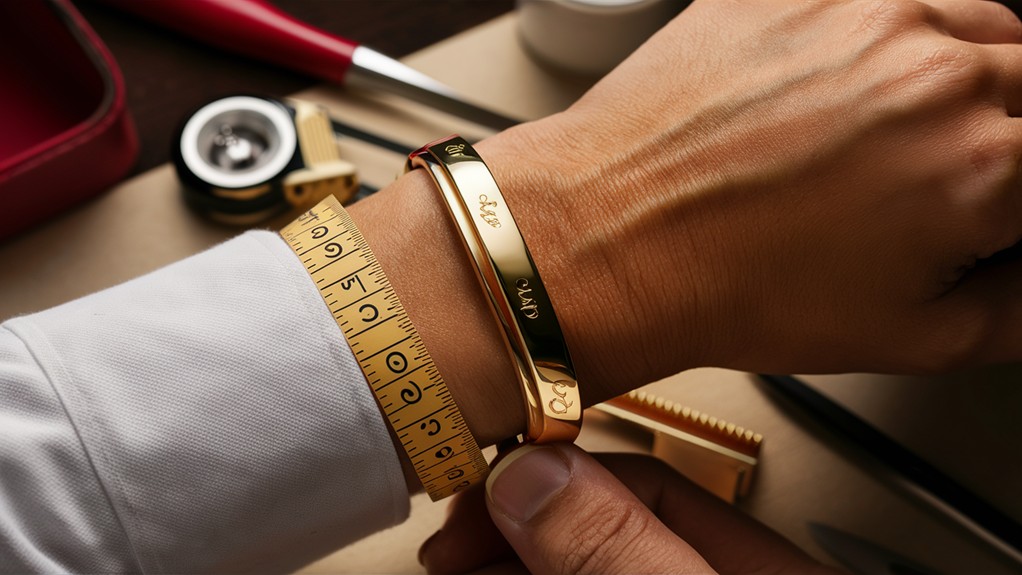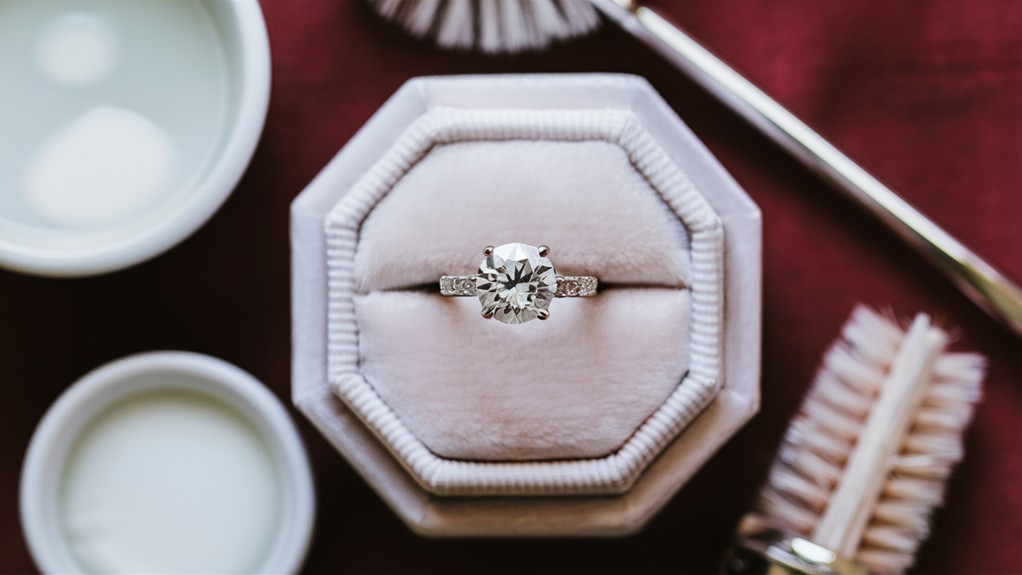So, you're wondering if white gold is magnetic, huh? Well, let's clear this up for you.
White gold, my friend, is not some mystical magnetic force. Sure, it might contain a smidge of magnetic metals like nickel, but it's usually not enough to make it stick to your fridge. In fact, the best way to determine if your jewelry is made of white gold is to use the real gold test method. This involves rubbing a piece of unglazed porcelain against the jewelry and applying nitric acid to the scratch mark. If the mark turns a creamy color, then it’s likely white gold. However, it’s always best to consult a professional jeweler for an accurate assessment.
The magnetism of white gold depends on the other metals mixed with it, like silver or palladium. But in most cases, white gold won't be pulling any magnets out of your pockets.
So, don't go expecting any magnetic miracles with your white gold jewelry. It's just not that kind of bling.
Our Highlighted Points
- White gold is not inherently magnetic and may only contain a small amount of magnetic metals like nickel.
- The magnetism of white gold depends on the other metals mixed with it and is generally not strong enough to stick to magnets.
- The proportion of ferromagnetic metals, particularly nickel, in white gold can slightly affect its magnetism, but it is rarely relevant to its magnetic properties in jewelry.
- Testing white gold's attraction to magnets can help determine its magnetic nature, but the small amount of nickel in white gold is usually insufficient to make the entire piece magnetic.
The Science Behind White Gold's Magnetism
Understanding the science behind white gold's magnetism can provide insight into the factors that contribute to its magnetic or non-magnetic properties.
White gold, a precious metal, is an alloy composed of gold and other white metals. The presence of ferromagnetic metals like iron, cobalt, or nickel can give white gold its magnetism. While white gold often contains nickel, the level of magnetism is generally too small to be significant.
The composition of white gold determines its magnetic properties, and it may contain non-magnetic metals such as silver or palladium. The magnetism of white gold is a result of quantum mechanical effects, where the arrangement of the metal's atoms influences its magnetic behavior.
In most cases, white gold isn't magnetic, but high amounts of ferromagnetic metals can make it magnetic.
Factors Affecting White Gold's Magnetic Properties
To determine the factors that affect the magnetic properties of white gold, you need to consider the ratio of ferromagnetic metals in its composition.
While white gold isn't inherently magnetic, the presence of certain metals can influence its magnetism.
Among these metals, nickel plays a significant role. White gold alloys with a higher proportion of nickel may exhibit slightly more magnetism than those with a higher proportion of other precious metals like palladium.
However, it's important to note that the magnetism in white gold is typically not strong enough to be attracted to a magnet or detected by metal detectors.
In the world of jewelry, the proportion of nickel in white gold is rarely relevant when it comes to its magnetic properties.
Exploring White Gold's Composition and Magnetism
To explore the magnetism of white gold, it's important to analyze its composition and determine the presence of ferromagnetic metals. White gold is an alloy consisting of gold and other metals, such as nickel. The composition of white gold plays a crucial role in its magnetic properties. While nickel is a magnetic material, the amount of nickel in white gold is typically too small to result in a significant magnetic effect. Therefore, in most cases, white gold isn't magnetic.
The non-magnetic nature of white gold doesn't indicate that it isn't genuine, as magnetism isn't a reliable method for determining authenticity. To determine the magnetism of white gold accurately, analyzing its composition and the presence of ferromagnetic metals is essential.
Testing White Gold's Attraction to Magnets
You can test the attraction of white gold to magnets by using a simple magnet test at home. Here's how:
- Gather a small magnet and your white gold jewelry.
- Hold the magnet near the white gold piece and observe if there's any magnetic attraction.
- If the white gold jewelry isn't attracted to the magnet or only shows a very weak attraction, it's likely that the gold isn't magnetic.
Keep in mind that white gold may contain small amounts of nickel, which is magnetic. However, the quantity of nickel in white gold is usually insufficient to make the entire piece magnetic.
Debunking Myths About White Gold's Magnetism
Many people mistakenly believe that white gold must be non-magnetic, but this isn't necessarily true. While white gold is often not magnetic, it can contain small amounts of nickel, a magnetic material.
The presence of nickel in white gold is what gives it its white color, as pure gold is naturally yellow. However, the amount of nickel in white gold is typically not enough to make it magnetic.
It's important to debunk the myth that magnetism is a foolproof test for determining the authenticity of white gold. Magnetism alone can't determine if white gold is genuine or not. Instead, it's best to rely on accurate information and consult professionals, like the Luvari Jewelry Concierge team, to determine the authenticity of white gold.
Conclusion
So, the next time you come across a piece of white gold jewelry and wonder if it's magnetic, remember this: white gold is like a gentle breeze that barely ruffles your hair.
It may contain trace amounts of magnetic metals, but the overall composition and ratio of other metals make it non-magnetic.
Just like how a gentle breeze can't move a heavy object, white gold's magnetism is too weak to have any significant effect.


